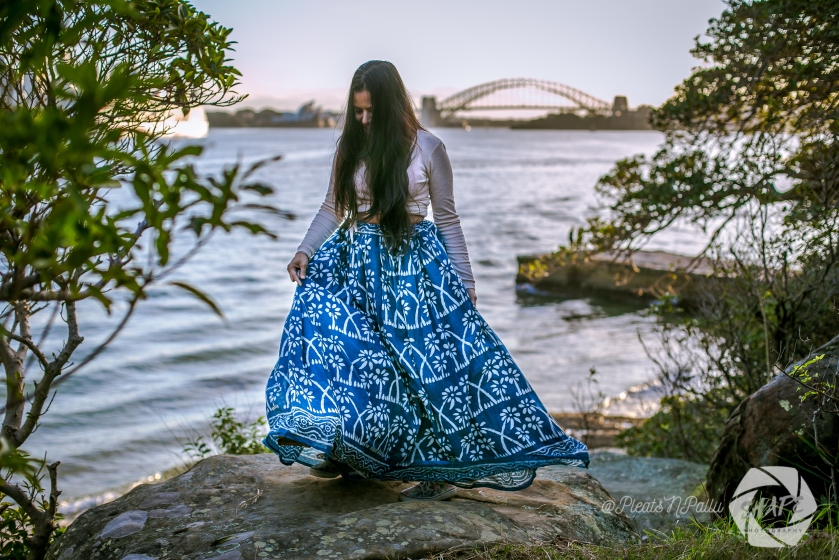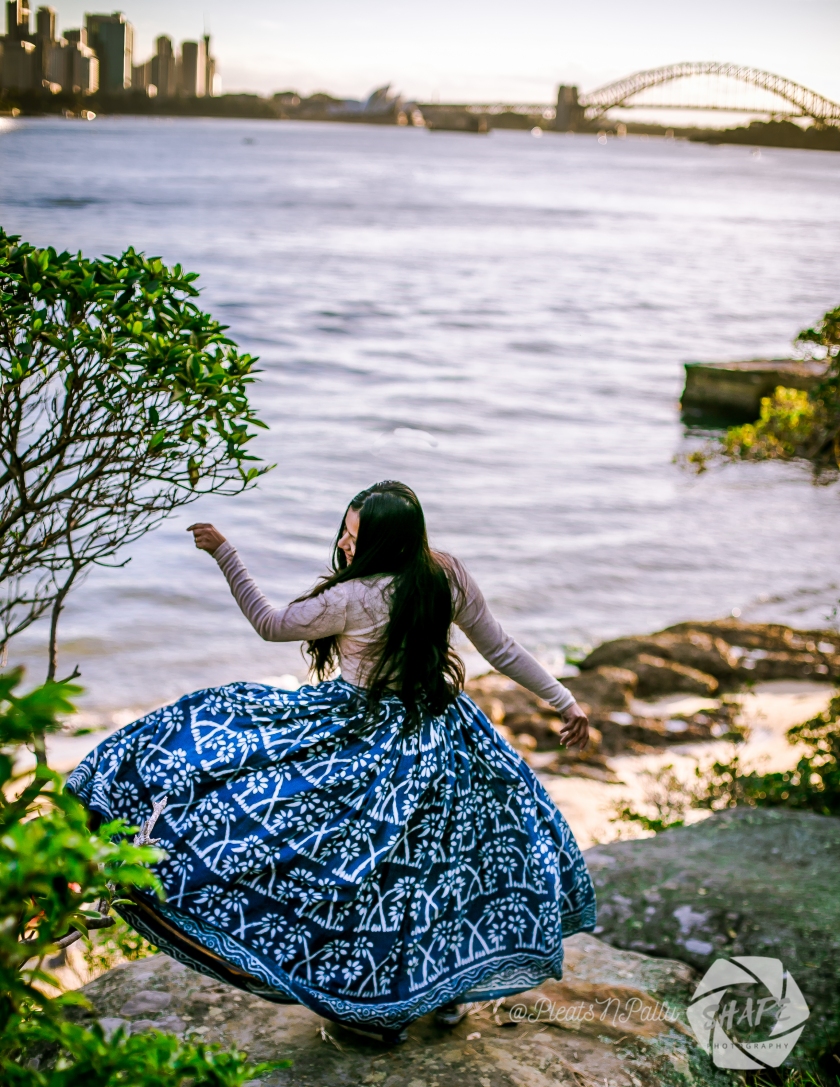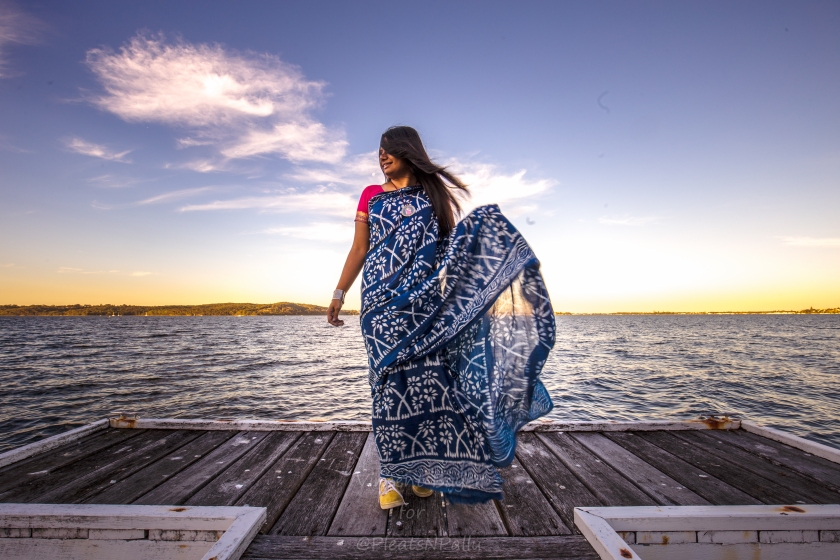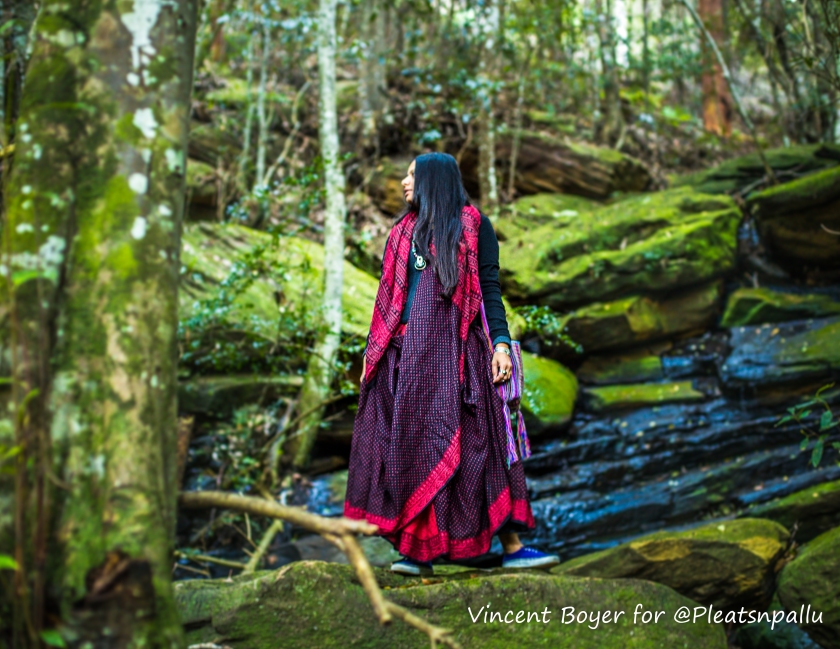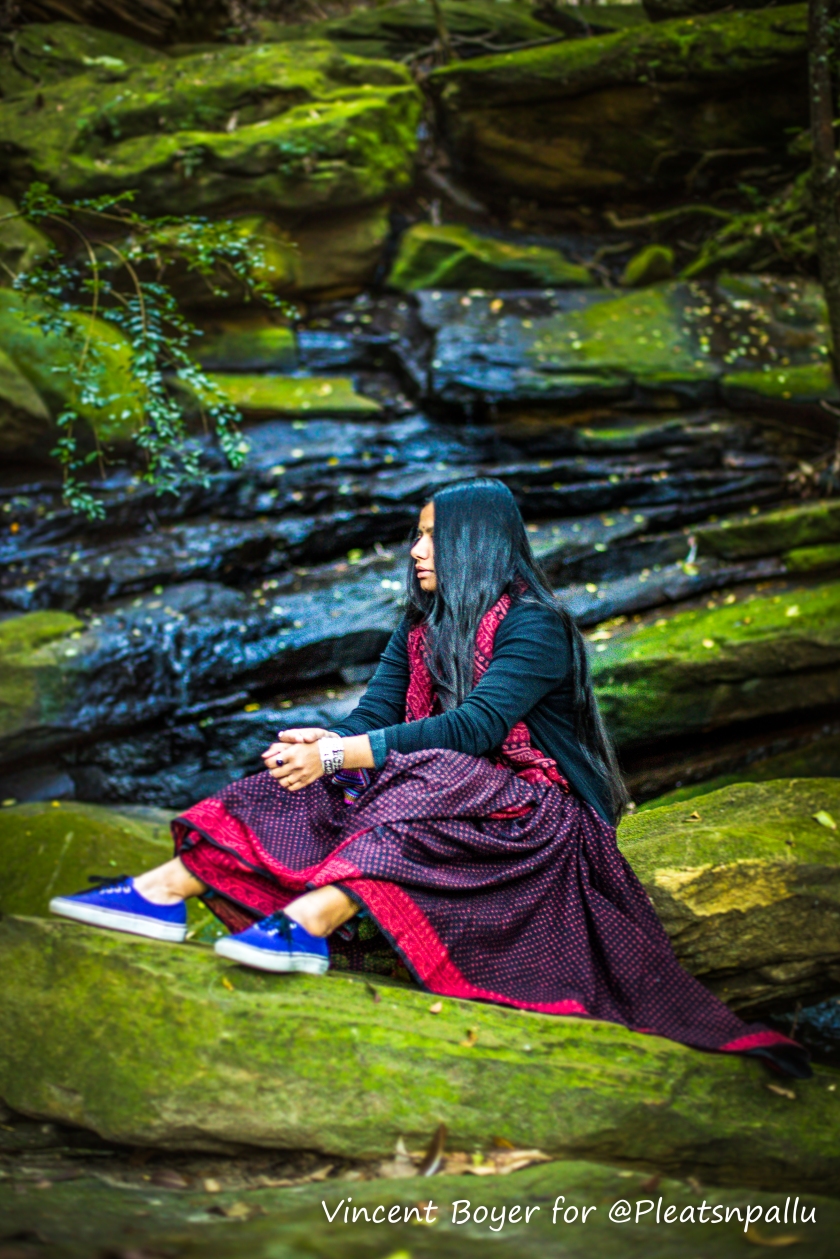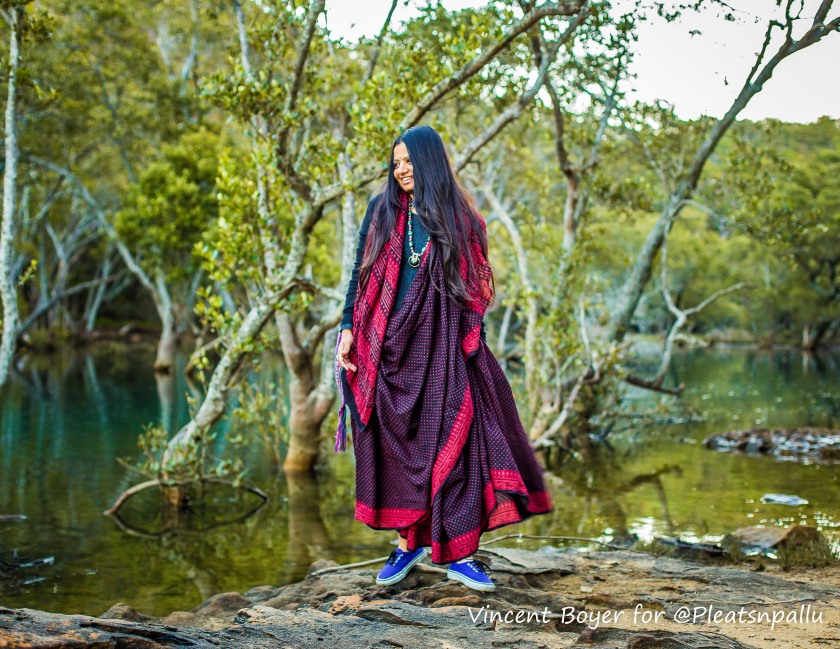An entire community of generations of artisans living and working in an enclave in Kolkata where they use clay to create magnificent likenesses of deities for Hindu celebrations…
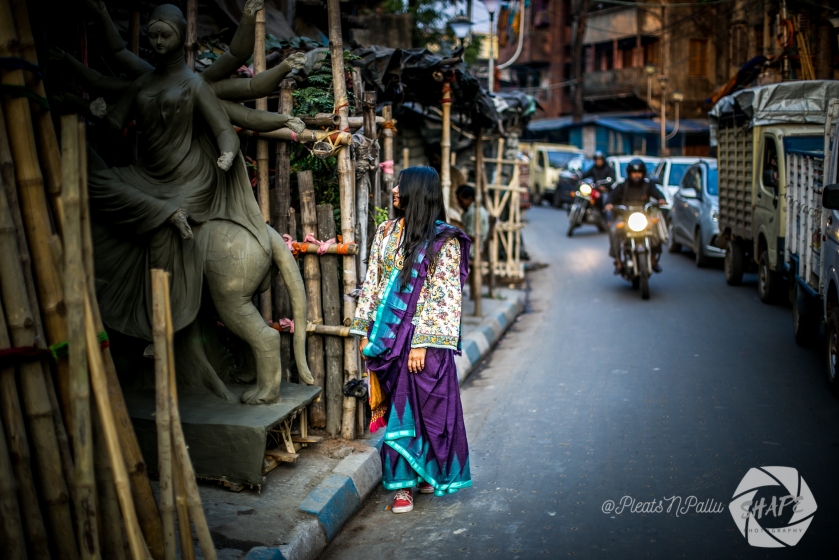
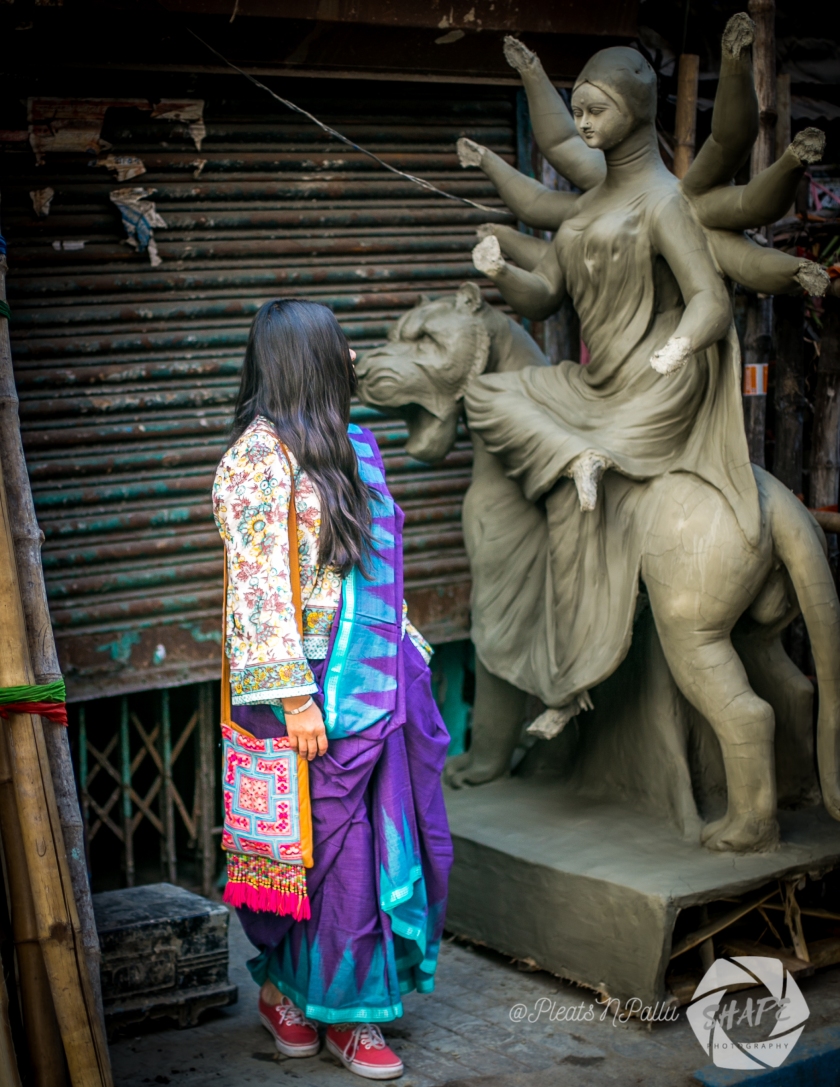
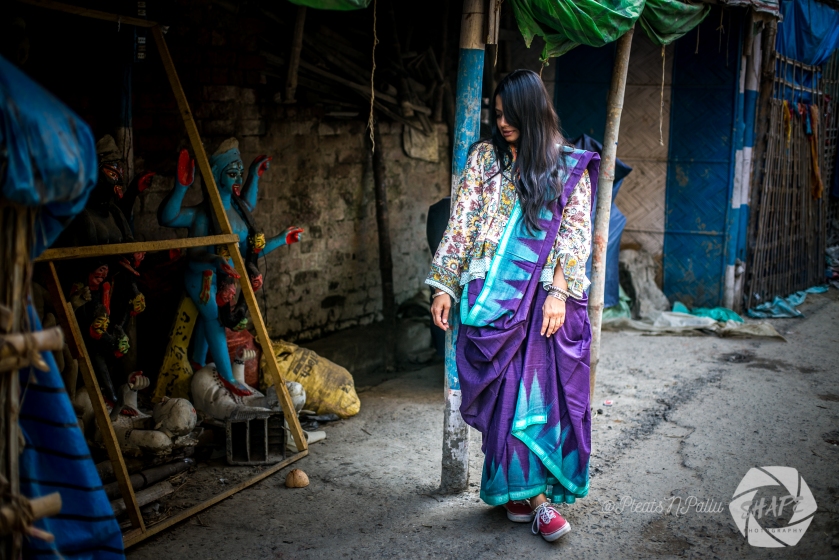
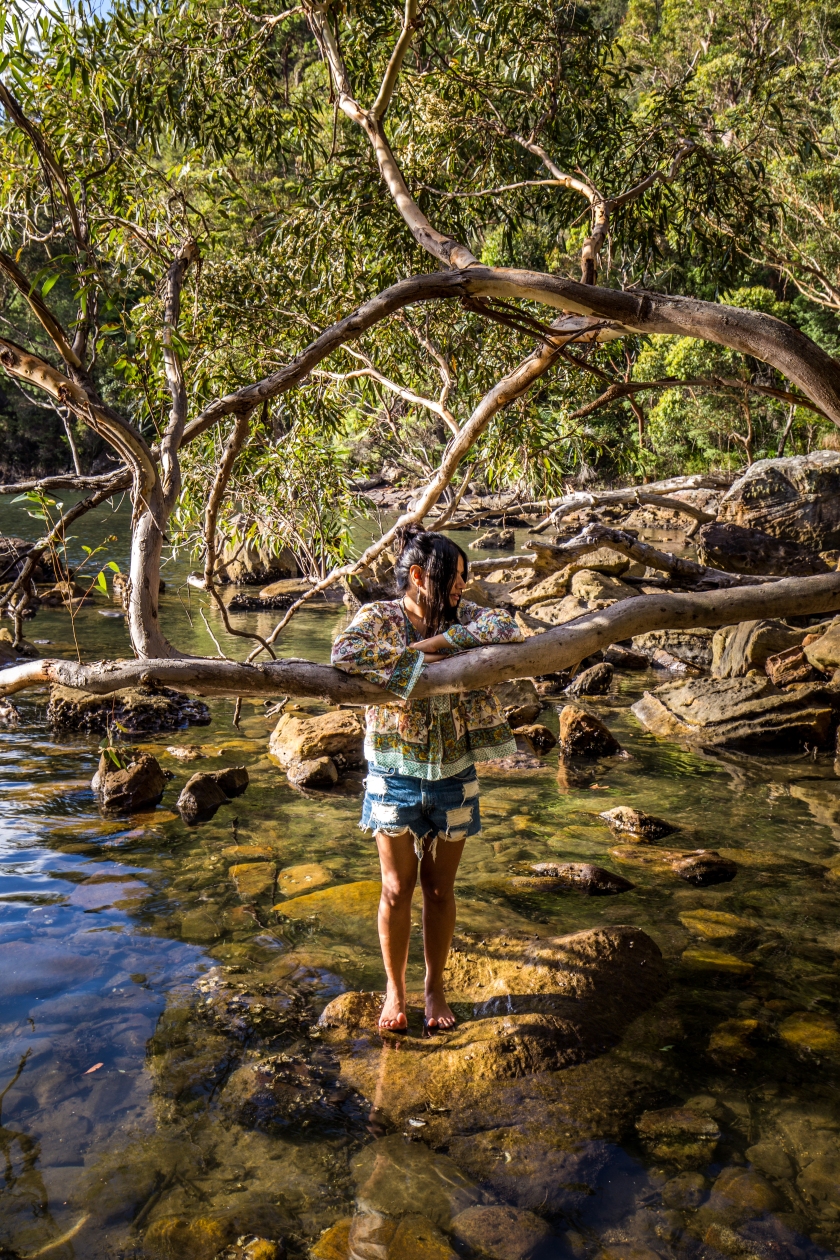
Photos: Vincent Boyer (Say hi on instagram @vincetravelbook)
This post is as much about the clay-works-of- art-in-progress that I am surrounded by in the images as it is about the handcrafted fabrics featured in the photos.
The saree I am wearing is borrowed from my friend with an eagle eye for fabrics. I swear she can spot brilliant textiles buried under rubbish from kilometres away, it’s just one of her super powers. If you don’t believe me, check her instagram out and you’ll see what I mean.
This saree is actually a massive length of hand loomed Odisha dhoti fabric with the distinctive ‘phoda kumbha’ border, that the state is known for.
The top I am wearing here was made by my tailor back home ages ago, and I wear it A LOT with denims, sarees, as a swimsuit cover-up etcetera. It features hand block print on well-worn cotton that is all kinds of comforting. You can see it worn with denim shorts over two and a half years ago here.
If you are keen to read more about hand block print fabrics from India, I have previously published the first in a series of post about the various kinds of this type of surface ornamentation on textiles from different parts of the subcontinent, which you can find here.
The top and the saree were a match made in heaven for a sweltering afternoon in Calcutta, we walked around for hours amazed by the statues in all forms of production and to see multiple artists working together.
This entire area houses craftspeople who live and work in narrow intersecting lanes, that in spite of the lack of space do not feel claustrophobic.
Each of these stunning clay deities is usually crafted by a team of between three and five artisans, the process begins with a bamboo frame that is bound with bundles of straw to create a basic shape. Malleable clay is then applied on the contours of the structure by the expert craftspeople, moulding it on the frame with their bare hands, brushes and the chiyari – a bamboo sculpting tool.
Then begins the more complex task of creating the feet, hands and head with clay; once the whole frame has been layered, it is wiped with a cloth soaked with wet clay to prevent cracks once the statue dries out.
Once the clay form dries, the final painting begins, after an initial coat of base paint, the idol is decorated with an array of vibrant colours. The entire process reaches its artistic apex when it comes to the idol’s eyes — a ritual known as chokkhu daan (gifting of eyes).
So revered is the act of painting the eyes of a deity that the artisan will often ritually cleanse himself with water – and sometimes meditate – before doing so. The final step sees rope-like hair glued onto the idol, which is then clothed with various shimmering textiles.
Once completely dry, the clay Goddesses are dressed in beautiful sarees, their 10 arms decorated with abundant ornaments and faux jewelry
I found a statue of Durga in the second photo especially striking – the tiger she’s sitting on was so lifelike (a very close inspection was had). I have always marvelled at the intricate beauty of the idols during the various Bengali festivals honouring Goddesses and to see these works of art in progress was quite special.
Coming across such a wealth of arts and crafts knowledge just brings home the beauty and richness of culture in the Motherland, that we’re unfortunately fast losing to rampant consumerism.
Here’s hoping that these art forms flourish for centuries to come and the craftspeople are paid wages that befit their immense skill and knowledge.
